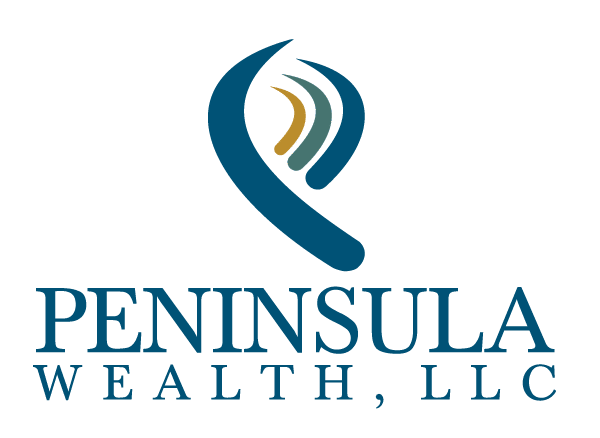If you’re like most folks, you may not spend a lot of active time thinking about your financial plan between meetings with your planner – but we know that regular check-ins also help to keep you on track and on goal. As we prepare for Q4, here are a few easy to make sure your financial plan stays on track:
Check-In On Your Goals & Your Portfolio
Q4 is a great time to check-in on the progress you’ve made against your personal financial goals and priorities. Are you on track or do you need to make some changes? If possible, check-in with your family and your financial planner to incorporate any changes in your personal goals or situation. Making changes now will set 2025 up for further success.
Manage Your Cash Flow
To ensure financial stability, it’s essential to manage your cash flow effectively. Start by analyzing your spending patterns for the year to understand your financial behavior and identify areas for improvement. Enhancing your savings can be achieved by automating contributions, such as increasing your 401(k) contribution by just 1%. Additionally, consider exploring refinancing options to reduce your mortgage or loan payments, which can free up cash flow and lessen financial pressure.
Maximize Retirement Contributions
Maximizing contributions to your retirement accounts can provide substantial tax benefits and boost your financial future. Adhere to the specific contribution deadlines and eligibility requirements for each type of retirement account, as these can vary. High-income earners may face phase-out limits for certain accounts, so it’s crucial to understand your eligibility. As the year ends, ensure you take your Required Minimum Distributions (RMDs) if you are 73 or older to avoid penalties. Remember that RMDs also apply to inherited retirement accounts, regardless of the account owner’s age. Additionally, consider making front-loaded contributions for the upcoming year to optimize tax advantages and enhance the growth potential of your retirement savings.
Enhance Charitable Giving
For those who prioritize charitable contributions, evaluate your giving strategy for greater impact. Consider contributing to a Donor Advised Fund and consolidating your donations to optimize your tax deductions. If you are 70½ or older, utilize Qualified Charitable Distributions (QCDs) to meet your charitable goals while managing your required distributions.
Optimize Your Investment Portfolio
A thorough evaluation of your investment portfolio is crucial for maintaining financial health. Look for opportunities to rebalance your portfolio to ensure it aligns with your risk tolerance and investment objectives. Explore strategies for tax loss harvesting to offset gains and reduce your taxable income. Additionally, track any tax loss carry-forwards and consider harvesting gains to balance your portfolio effectively. Regularly assess the estimated income from your investments to make informed decisions about future adjustments.
Plan Your Taxes Strategically
Strategic tax planning aims to lower your lifetime tax liability by making informed decisions about how and when to recognize income and deductions. As you prepare for the upcoming year, focus on optimizing your income to make the most of your tax brackets and explore opportunities to either accelerate or defer income to achieve tax savings. Assess whether Roth conversions could be advantageous based on your current and projected future tax rates. Additionally, consider any significant life changes—such as buying or selling a home, having a baby, or changes in marital status—that could impact your tax situation.
Navigate Equity Compensation
Take inventory of the types of equity compensation you hold, including what you plan to exercise and what will be vesting soon. Review your Incentive Stock Option (ISO) exercises to determine if you might be subject to Alternative Minimum Tax (AMT). Consider accelerating your ISO exercises to utilize AMT credits or exercising up to the AMT crossover threshold to minimize your tax impact. For your Employee Stock Purchase Plan (ESPP) shares, plan your dispositions carefully. Decide whether to pursue qualifying dispositions for favorable tax treatment or disqualifying dispositions, which may incur higher taxes but offer the advantage of reallocating those funds to investments or financial strategies that better meet your goals.
Maximize Employer Benefits
Leverage your employer benefits to enhance your overall financial well-being. Use up your Flexible Spending Account (FSA) balances before they expire, as these accounts are typically “use-it-or-lose-it.” When it comes to your Health Savings Account (HSA), consider not only maximizing your contributions but also investing the balance to optimize for long-term growth. HSAs offer a unique triple tax advantage: contributions are tax-deductible, growth is tax-free, and withdrawals for qualified medical expenses are also tax-free. By taking full advantage of this tax-efficient investment vehicle, you can significantly boost your long-term savings and healthcare planning. Additionally, be mindful of when your insurance plan deductibles reset to plan your healthcare expenses effectively and make the most of your benefits.
Make sure to include your financial planner and other partners in your Q4 planning as well so that they can keep you on track all year long.

